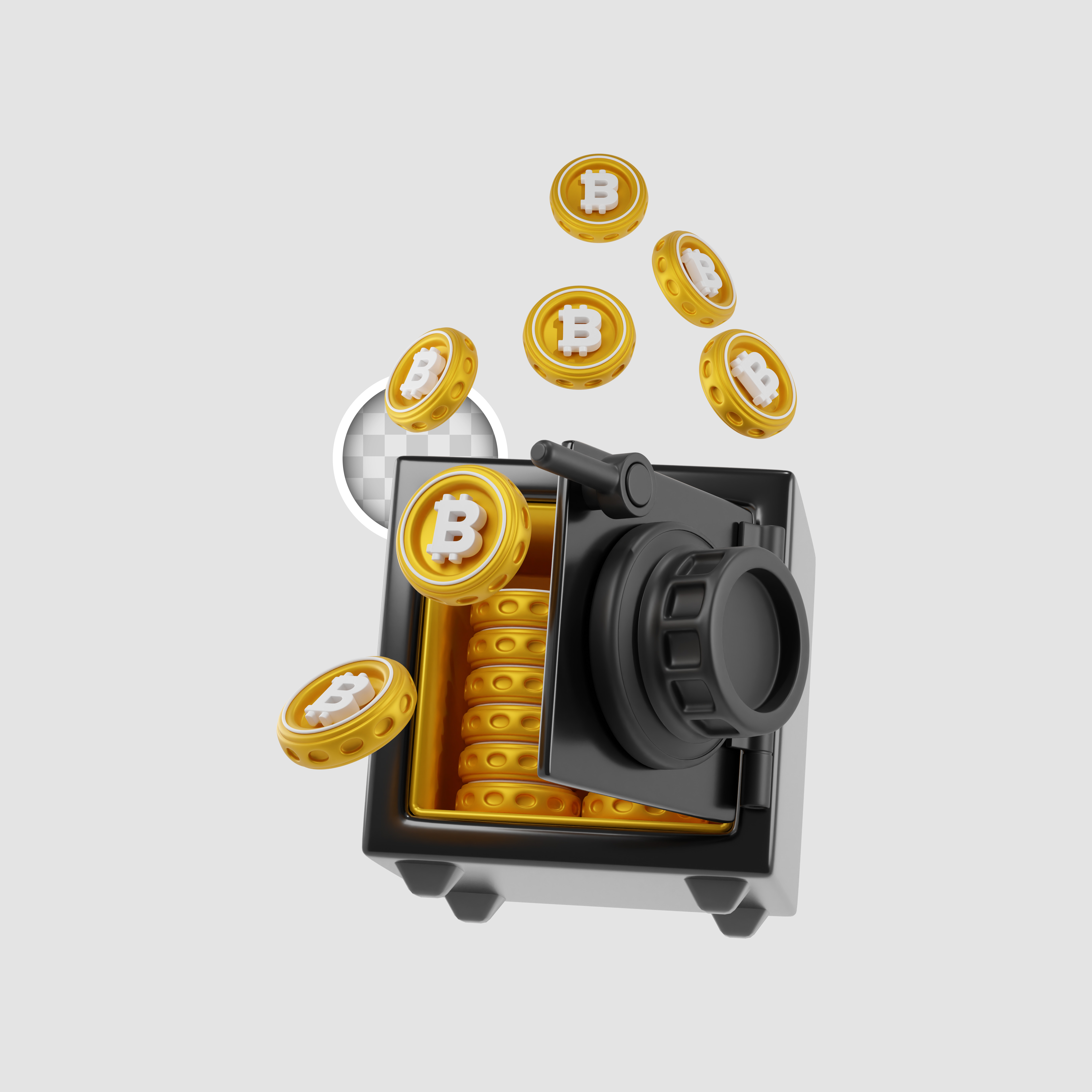7 months ago
How to Keep Your Crypto Secure

Cryptocurrency, a hallmark of modern finance, brings unique challenges in asset security. The most pressing threats often emerge from everyday devices like smartphones, computers, and laptops – the very places we store our wallets and keys for cryptocurrencies. These threats extend to websites used for buying or selling cryptocurrencies.
Understanding how to keep your cryptocurrency safe is crucial, especially considering the different storage options available for digital assets. Each of them offers a distinct blend of convenience and safety, as highlighted in our previous article, “Types of Cryptocurrency Wallets”. The incident with the Japanese cryptocurrency exchange Liquid, where hackers compromised digital wallets and transferred $97 million worth of digital coins, illustrates that the safest way to keep crypto relies on not just the safety of your wallet but also on your actions.
While choosing a safe approach for storing your cryptocurrency is crucial, personal vigilance plays an equally vital role. This article aims to arm you with knowledge and practices to secure your crypto wallet and keep your crypto wallet safe against both external threats and potential user errors.
How Hackers Target Crypto Assets
 Hackers have developed a myriad of sophisticated methods to compromise cryptocurrency assets. Their strategies often involve exploiting both technological weaknesses and human psychology. Comprehending these tactics is crucial for enhancing your digital asset security.
Hackers have developed a myriad of sophisticated methods to compromise cryptocurrency assets. Their strategies often involve exploiting both technological weaknesses and human psychology. Comprehending these tactics is crucial for enhancing your digital asset security.
-
Phishing Attacks: Among the frequently employed tactics by hackers, phishing stands out. In this method, they craft counterfeit websites or dispatch deceptive emails that imitate genuine services, all in an attempt to deceive users into disclosing their private keys or wallet credentials.
-
Malware and Ransomware: Hackers use malware to infiltrate a user’s device to steal credentials, intercept transactions, or even encrypt wallet data for ransom.
-
SIM Swapping: This means tricking a mobile carrier into moving a victim's phone number to a SIM card the hacker controls. Once done, they can bypass SMS-based two-factor authentication to access crypto accounts.
-
Man-in-the-Middle Attacks: Hackers block the communication between users and services (like crypto exchanges) to capture sensitive data, which can be used to gain illegitimate access to crypto wallets.
-
Social Manipulation: Beyond technical approaches, hackers employ social manipulation tactics to coerce individuals into revealing sensitive information, frequently through deceptive support messages or fictitious investment offers.
-
API Key Exploitation: If a user has generated API keys for their crypto accounts (for trading bots, for example), hackers may target these keys to gain access to the account.
-
Exploiting Wallet Vulnerabilities: Software wallets, particularly if they haven't been consistently updated, can possess weaknesses that hackers can manipulate to gain unauthorized access.
-
Clipboard Hijacking: A subtler technique in which malware alters the contents of a clipboard (where cryptocurrency addresses are often copied and pasted) to redirect transactions to the hacker's address.
By understanding these common methods employed by hackers, users can be more vigilant and take proactive steps to protect their crypto assets. This knowledge is crucial in a context where security threats are constantly evolving and increasing in complexity.
Basic Steps to Strengthen Your Cryptocurrency Security
In the realm of cryptocurrency, safeguarding your assets requires a blend of technological savvy and personal diligence. The rise in digital currency popularity brings with it an increase in potential security threats. Therefore, adopting a comprehensive approach to keep your crypto secure is essential. Below are key strategies to enhance the security of your digital assets.
Adopt Safe Cyber Habits
Strong cybersecurity habits serve as the initial line of defense. This encompasses employing robust, distinctive passwords for each account, exercising prudence in the data you divulge on the internet, and maintaining vigilance against suspicious emails and messages.
Use Two-Factor Authentication for Your Exchange
Two-factor authentication (2FA) adds an extra level of security beyond the use of a password. It may include a code sent to your mobile device or generated by an application, guaranteeing that you are the only one who can access your account, even if someone else knows your password.
Keep Your Software Up to Date
It is very important to regularly update your computer's operating system, your smartphone and any software wallets you use.
Safeguard Your Seed Phrases Effectively
Your wallet's seed words are essential for accessing your crypto assets. Keep them in a secure location and consider using paper to protect against digital issues or hacking.
Choose a Trustworthy Platform to Buy or Sell Cryptocurrencies
Research and select cryptocurrency exchanges and wallets with a strong track record for security. Check for platforms that employ robust security measures like cold storage for funds, insurance policies, and a history of strong security practices.
Avoid Single Points of Failure (SPOF) and Diversify Risks
Don’t keep all your assets in one wallet or on a single platform. Distribute your investments across various wallets and exchanges to mitigate risks. This diversification can protect you if one system fails.
Use a Hardware Wallet if Possible
For substantial holdings, a hardware wallet offers the safest way to hold crypto and enhanced security. These devices store your private keys offline, making them immune to online hacking attempts.
Verify the URL (Avoid Unlicensed Software)
Always verify that you are accessing the legitimate website of your wallet or exchange. Hackers often create fake sites to steal login credentials. Check the URL carefully and bookmark the authentic site to avoid being fooled.
Avoid Public Wi-Fi for Cryptocurrency Transactions
Public Wi-Fi networks are not secure and can be easily compromised. Avoid using these networks for any crypto-related transactions. If you must use public Wi-Fi, ensure that you are using a secure VPN.
Subscribe to a VPN Service
A Virtual Private Network (VPN) encrypts your Internet connection, safeguarding your online actions from surveillance or interception. This is especially important when trading and accessing wallet, as it adds an additional layer of security to your online endeavors.
Implementing these strategies can significantly strengthen the security of your crypto. Although no system can guarantee complete invulnerability, combining these measures can greatly reduce your vulnerability to the most common threats in the crypto world.
Conclusion: Proactively Securing Your Digital Wealth
In sum, the security of your crypto assets is a dynamic endeavor, requiring both the use of secure storage methods and personal diligence. Continual education on the best way to keep your crypto safe and adopting up-to-date security measures are essential in navigating the ever-evolving landscape of cryptocurrency security.
Securing your digital assets goes beyond relying solely on wallet security. It entails taking a holistic approach that encompasses both technological protection and educated personal behavior. Remember, in the realm of cryptocurrency, your security is as robust as your weakest link.
Spend your crypto
How are Cryptocurrency Hot Wallets Different from Cold Wallets
What is USDT — Tether coin meaning in cryptocurrency
How to Buy and Invest in Bitcoin
Cryptocurrency Security in 2024
Difference Between CEX and DEX in Crypto
What Is a Crypto Exchange
The Biggest Crypto Scams of All Time
Difference Between a Crypto Exchange And Broker
Accounting for Cryptocurrencies
Types of Cryptocurrency Wallets
Stay informed about the latest news on crypto
Subscribe to our newsletter.








